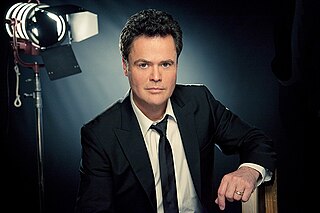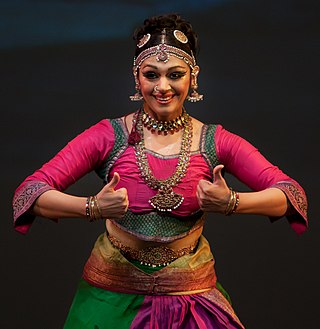
arXiv is an open-access repository of electronic preprints and postprints approved for posting after moderation, but not peer review. It consists of scientific papers in the fields of mathematics, physics, astronomy, electrical engineering, computer science, quantitative biology, statistics, mathematical finance and economics, which can be accessed online. In many fields of mathematics and physics, almost all scientific papers are self-archived on the arXiv repository before publication in a peer-reviewed journal. Some publishers also grant permission for authors to archive the peer-reviewed postprint. Begun on August 14, 1991, arXiv.org passed the half-million-article milestone on October 3, 2008, had hit a million by the end of 2014 and two million by the end of 2021. As of November 2024, the submission rate is about 24,000 articles per month.

The University of Florida is a public land-grant research university in Gainesville, Florida, United States. It is a senior member of the State University System of Florida. The university traces its origins to 1853 and has operated continuously on its Gainesville campus since September 1906.

Brigham Young University (BYU) is a private research university in Provo, Utah, United States. It was founded in 1875 by religious leader Brigham Young and is sponsored by the Church of Jesus Christ of Latter-day Saints.

Salsa is a Latin American dance, associated with salsa music. It originated in Eastern Cuba in the late 1940s and gained popularity in New York in 1960.
Electropop is a popular music fusion genre combining elements of the electronic and pop styles. It has been described as a variant of synth-pop with outstanding heavy emphasis on its electronic sound. The genre was developed in the 1980s and saw a revival of popularity and influence in the late 2000s.

Anthony Dymoke Powell was an English novelist best known for his 12-volume work A Dance to the Music of Time, published between 1951 and 1975. It is on the list of longest novels in English.

The University of Pittsburgh (Pitt) is a state-related research university in Pittsburgh, Pennsylvania, United States. The university is composed of seventeen undergraduate and graduate schools and colleges at its urban Pittsburgh campus, home to the university's central administration and around 28,000 undergraduate and graduate students. The 132-acre Pittsburgh campus includes various historic buildings that are part of the Schenley Farms Historic District, most notably its 42-story Gothic revival centerpiece, the Cathedral of Learning. Pitt is a member of the Association of American Universities and is classified among "R1: Doctoral Universities – Very high research activity". It is the second-largest non-government employer in the Pittsburgh metropolitan area.

Elsevier is a Dutch academic publishing company specializing in scientific, technical, and medical content. Its products include journals such as The Lancet, Cell, the ScienceDirect collection of electronic journals, Trends, the Current Opinion series, the online citation database Scopus, the SciVal tool for measuring research performance, the ClinicalKey search engine for clinicians, and the ClinicalPath evidence-based cancer care service. Elsevier's products and services include digital tools for data management, instruction, research analytics, and assessment. Elsevier is part of the RELX Group, known until 2015 as Reed Elsevier, a publicly traded company. According to RELX reports, in 2022 Elsevier published more than 600,000 articles annually in over 2,800 journals; as of 2018 its archives contained over 17 million documents and 40,000 e-books, with over one billion annual downloads.
Scopus is a scientific abstract and citation database, launched by the academic publisher Elsevier as a competitor to older Web of Science in 2004. An ensuing competition between the two databases has been characterized as "intense" and is considered to significantly benefit their users in terms of continuous improvent in coverage, search/analysis capabilities, but not in price. Free database The Lens completes the triad of main universal academic research databases.

Donald Clark Osmond is an American singer, dancer, actor, television host and former teen idol. He first gained fame performing with four of his elder brothers as the Osmonds, earning several top ten hits and gold albums. In the early 1970s, Osmond began a solo career, earning several additional top ten songs.

Creighton University is a private research university in Omaha, Nebraska, United States. Founded by the Society of Jesus in 1878, the university is accredited by the Higher Learning Commission. In 2015 the university enrolled 8,393 graduate and undergraduate students on a 140-acre (57 ha) campus just outside of downtown Omaha. It is classified among "R2: Doctoral Universities – High research activity". It comprises nine undergraduate, graduate, and professional schools and colleges, including a law school, medical school, dental school, pharmacy school, nursing school, and business school. The university operates the Creighton University Medical Center. It has a second campus focused on health sciences located in Phoenix, Arizona.

Shobana Chandrakumar Pillai is an Indian actress and Bharatanatyam dancer. She acts predominantly in Malayalam films along with Telugu, Tamil, Hindi, Kannada and English films. She has won two National Film Awards, one Kerala State Film Awards, two Filmfare Awards South with 14 Nominations for Best Actress Category in three different south Indian languages. She was honoured with Kalaimamani by Tamil Nadu State Government in 2011 and numerous other awards. In a career spanning more than 40 years, Shobana has starred in 230 films across several languages.

Dancing with the Stars is an American dance competition television series that premiered on ABC on June 1, 2005. It is the American version of the British reality TV competition Strictly Come Dancing, and is part of the Dancing with the Stars franchise. The show pairs celebrities with professional dancers. Each couple competes against the others for judges' points and audience votes. The couple receiving the lowest combined total of judges' points and audience votes is usually eliminated each week until only the champion dance pair remains. The series is hosted by Alfonso Ribeiro and Julianne Hough, with Carrie Ann Inaba, Derek Hough, and Bruno Tonioli serving as judges.

The New School is a private research university in New York City. It was founded in 1919 as The New School for Social Research with an original mission dedicated to academic freedom and intellectual inquiry and a home for progressive thinkers. Since then, the school has grown to house five divisions within the university. These include the Parsons School of Design, the Eugene Lang College of Liberal Arts, the College of Performing Arts, which includes the Mannes School of Music, The New School for Social Research, and the Schools of Public Engagement.

Oyo Hotel & Casino is a casino hotel near the Las Vegas Strip in Paradise, Nevada, United States. It is owned by Highgate and Oyo Hotels & Homes, and its casino is operated by Paragon Gaming. It is located east of the Strip and next to the former site of the Tropicana resort. The hotel has 696 rooms with a 30,000-square-foot (2,800 m2) casino.

Sage Publishing, formerly SAGE Publications, is an American independent academic publishing company, founded in 1965 in New York City by Sara Miller McCune and now based in the Newbury Park neighborhood of Thousand Oaks, California.

The Web of Science is a paid-access platform that provides access to multiple databases that provide reference and citation data from academic journals, conference proceedings, and other documents in various academic disciplines.

Bitcoin is the first decentralized cryptocurrency. Nodes in the peer-to-peer bitcoin network verify transactions through cryptography and record them in a public distributed ledger, called a blockchain, without central oversight. Consensus between nodes is achieved using a computationally intensive process based on proof of work, called mining, that secures the bitcoin blockchain. Mining consumes large quantities of electricity and has been criticized for its environmental impact.

ByteDance Ltd. is a Chinese internet technology company headquartered in Haidian, Beijing and incorporated in the Cayman Islands.

TikTok, whose mainland Chinese and Hong Kong counterpart is Douyin, is a short-form video hosting service owned by Chinese internet company ByteDance. It hosts user-submitted videos, which can range in duration from three seconds to 60 minutes. It can be accessed with a smart phone app or the web.

















